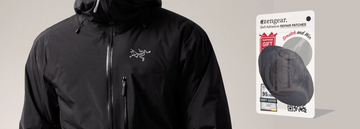Top 10 Emergency Survival Poncho Questions and Answers
by Emily Jannet on Dec 09, 2023
In the realm of emergency preparedness, few items are as versatile and essential as the emergency survival poncho. Whether you're an avid adventurer, a prepper, or just a cautious individual, having the right information about survival ponchos can be a game-changer. In this article, we delve into the top 10 questions surrounding emergency survival ponchos to guide you in making informed decisions when it comes to your preparedness gear.
-
What makes an emergency survival poncho different from a regular poncho?
Emergency survival ponchos are specifically designed for unforeseen circumstances, such as sudden downpours or unexpected temperature drops. Unlike regular ponchos, they are crafted from durable materials that provide protection against the elements while being compact and lightweight for easy storage in emergency kits or backpacks.
-
Are all emergency survival ponchos the same?
Not all survival ponchos are created equal. While the basic function is to provide shelter from the elements, factors like material, size, and features can vary. Some survival ponchos are designed for single-use, while others are reusable. It's crucial to consider your specific needs and intended use when selecting a survival poncho.
-
How do I properly store an emergency survival poncho?
Proper storage ensures the longevity and effectiveness of your emergency survival poncho. Store it in a cool, dry place away from direct sunlight and extreme temperatures. Regularly check for any signs of damage, such as tears or holes, and replace it if necessary.
-
Can a survival poncho be used as a makeshift shelter?
Yes, many emergency survival ponchos are designed to function as makeshift shelters in addition to providing personal protection. They often come with grommets or tie-downs, allowing you to create a rudimentary shelter by securing the poncho to trees, poles, or other available structures.
-
What materials are commonly used in emergency survival ponchos?
Emergency survival ponchos are typically made from lightweight, durable materials such as polyethylene or Mylar. Polyethylene ponchos are robust and provide reliable protection against rain and wind, while Mylar ponchos offer excellent heat retention, making them suitable for cold weather conditions.
-
Are survival ponchos reusable, or are they single-use only?
The answer to this question depends on the specific poncho. Some are designed for single use and may tear or lose effectiveness after extended use. However, many survival ponchos are crafted from durable materials, making them reusable as long as they are properly maintained and free from significant damage.
-
Can emergency survival ponchos be used for activities other than emergencies?
Absolutely! Many outdoor enthusiasts, hikers, and campers carry emergency survival ponchos in their gear. They serve as excellent backup rain gear and can be a lifesaver in unexpected weather changes. Additionally, their compact size makes them convenient for various outdoor activities.
-
What features should I look for in a quality emergency survival poncho?
When choosing a survival poncho, consider features such as durability, waterproofing, size, and portability. Look for reinforced seams, grommets for tie-downs, and a compact design for easy storage. Some ponchos may also come with hoods and sleeves for added protection.
-
Can emergency survival ponchos be used in cold weather?
Yes, many emergency survival ponchos are designed to provide protection in cold weather conditions. Mylar ponchos, in particular, excel in retaining body heat and can be a crucial addition to your winter emergency kit. Layering with other clothing items will enhance their effectiveness in colder temperatures.
-
How do I clean and maintain my emergency survival poncho?
Cleaning and maintaining your survival poncho are straightforward tasks. Wipe off any dirt or debris with a damp cloth, and if necessary, use a mild soap for more thorough cleaning. Allow the poncho to air dry completely before storing it. Regular inspections for damage ensure that your poncho remains in optimal condition when you need it most.
Conclusion
A well-chosen emergency survival poncho can be a valuable asset in your preparedness toolkit. By understanding the key features, uses, and maintenance requirements, you empower yourself to make informed decisions when selecting the right poncho for your needs. Whether you're a seasoned adventurer or just getting started with emergency preparedness, a reliable survival poncho is an essential investment that can make a significant difference in unforeseen situations.





